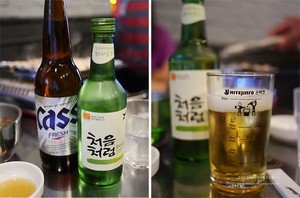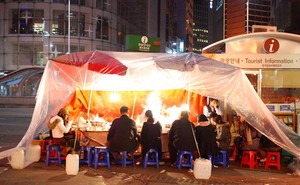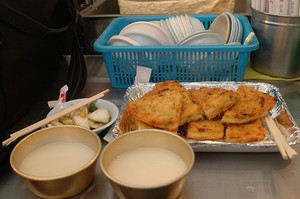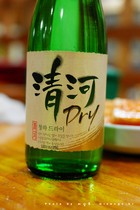Wish you could buy the extravagant things on your wish list at more affordable prices? With a little luck and some know-how, you can worry less about your budget and find your favorite brand items at 30-70% off the regular retail price. Keep reading to find out where you can purchase trendy, luxurious items without emptying your wallet.
Premium Outlets
Yeoju Premium Outlets
Yeoju Premium Outlets was jointly developed by Simon Property Group (a corporation from the USA) and Shinsegae Chelsea. It was the first original outlet in Korea and offers products at 25-65% off the retail price all year round. Among the 144 brands, you’re sure to recognize famous names such as Giorgio Armani, Bally, Burberry, Dior, DKNY, Fendi, Gucci, Marc Jacobs, and Max Mara. There are also stores that sell shoes, bags, accessories, children’s wear, and house wares. Most products are from previous seasons and popular items are only available in limited sizes, so it’s best to go the outlet with no particular “must-purchase” item in mind.
Paju Premium Outlets
Following the success of the Yeoju Premium Outlets, Paju Premium Outlets opened on March 18, 2011 in Paju. Stores include Nike, Gap, Tommy Hilfiger, Bean Pole, Adidas, Coach, Gucci, Marc Jacobs, Max Mara, and more. The outlet offers 25-65% discounts year-round on all of its 150 designer brands. The Adidas store is a real bargain with clothes and shoes selling at 60-80% off the regular retail price. Giorgio Armani offers most items at discounts of 50% or more, and some Armani t-shirts are even available in the 20,000 won range.
In addition to fashion stores, Paju Premium Outlets also has 13 house ware brands including Le Creuset and Tefal, as well as a LEGO store.
Lotte Premium Outlets
As the largest outlet mall in Korea, Lotte Premium Outlet Paju has international brand stores not available in other outlet stores in Korea, such as Paul Smith, Mulberry, TAG Heuer, and Kate Spade. There are also 320 other popular brand stores including Beanpole, Polo, MCM, Nike, and Adidas.
There is also a multiplex cinema equipped with state-of-the-art digital audio systems, a Pororo kid’s café for families with children, a park on the rooftop, and various restaurants. With nearby attractions such as the Unification Observatory, Heyri Art Village, and Paju English Village, visitors can tour around after or before shopping.
Outlets Specializing in Local Brands
Gimpo Airport Outlet
The Gimpo Airport Outlet is located in the international terminal of Gimpo Airport, where flights connect to destinations such as Tokyo, Haneda, Osaka, Nagoya, Shanghai, and Beijing. Gimpo Outlet has an upscale atmosphere that is almost like shopping in your favorite department store. Another major plus is that the outlet is easily accessible via Subway Lines 5, 9, and Airport Railroad Express (AREX). This way, you won’t have the hassle of lugging your heavy shopping bags through a bunch of transfer points.
The outlet offers 207 local brands and typically sells the previous year’s fashions at 30-70% off. You’ll also be able to find a selection of specially designed seasonal items (this year’s fashions) that are sold at around 30% discount. Check out the 1st floor to find women’s clothing, leather products, cosmetics, and jewelry shops. The 2nd floor has men’s clothing and sports & outdoor gear. Kids’ clothing and lingerie outlets, cell phone shops and restaurants can be found on the 3rd floor. The Louisienne, a premium outlet that opened in December 2010, carries brands like Michael Kors, Coach, and Etienne Aigner.
The outlet provides a tax refund service where you can receive a refund on VAT (Value Added Tax). For shoppers from China, the outlet also accepts China’s UnionPay credit card.
The Lotte Mall Gimpo Airport, located next to Gimpo Airport’s international passenger terminal, has a department store, multiplex cinema, supermarket, hotel, and exhibition hall, providing even more cultural activities and shopping.
Munjeongdong Outlet
Just take the subway to Munjeong Station, and you’ll soon find yourself on a wide street full of great products and top brands like Polo, Bean Pole, Levi’s, Quicksilver, Nike, Adidas, and Puma. Nike offers off-season items at 40% discounts, including clothing, sports shoes, and hats.
At the Munjeongdong Outlet, there are also other shopping malls like Mods Shopping Mall, and other local and overseas casual wear and luxury brands.
Mario Outlet
Spanning 132,000 square meters in Gasan-dong, Seoul, Mario Outlet is Asia’s largest urban hybrid (two functions or roles combined into one) outlet that carries about 500 brands. It was established in July 2001 as a fashion outlet store situated in the heart of downtown Seoul. Over the years, it has expanded into “Mario Outlet Town” by opening a second store (Mario 2) in 2004 and yet another one (Mario 3) in September 2012. As the outlet mall with the biggest scale and the largest number of brands in Asia, Mario Outlet offers a one-stop shopping experience and various cultural services. It features diverse shopping categories ranging from luxury brand items to clothes, accessories, cosmetics, furniture, and house wares, as well as premium restaurants, fast food restaurants, kids’ theme park, and more. By offering popular domestic brand products at discounts of up to 80%, Mario Outlet is rising as a reasonable shopping space for modern consumers who value “smart shopping”.
In addition to accepting cash payments in US dollars and Japanese yen for shoppers from abroad, Mario Outlet conducts affiliate marketing with China UnionPay credit card to make shopping convenient for Chinese shoppers who account for a large part of the sales. The outlet also provides tax refund services through which you can receive a refund on VAT (Value Added Tax) for purchases of over 30,000 won at Mario Outlet. Tax refund tickets are issued right off at the customer centers located on the Mario 1 seventh floor and the Mario 3 eleventh floor. Further shopping conveniences offered by the outlet include shopping information services exclusively for international tourists. Pamphlets containing the outlet’s shopping information are available in English, Chinese, and Japanese at the Mario 3 third floor information desk and throughout the mall.
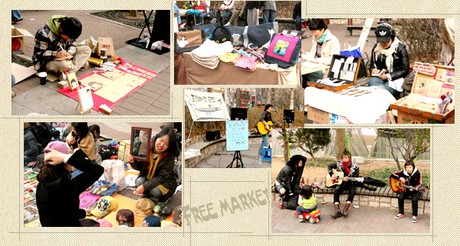
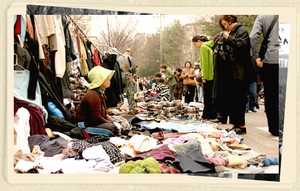
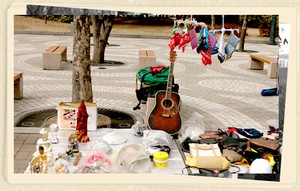
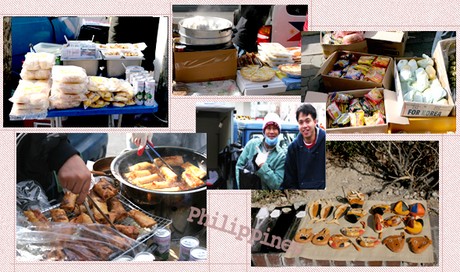
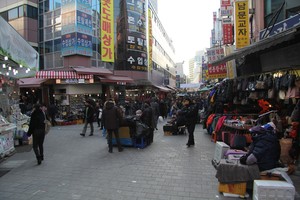
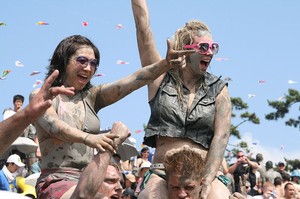
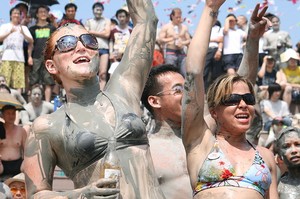
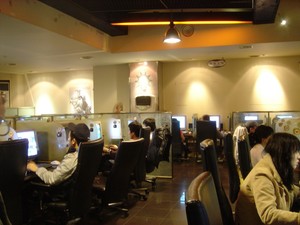
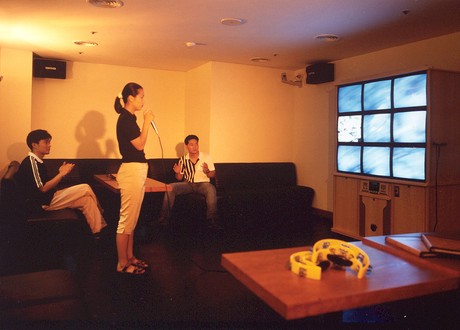
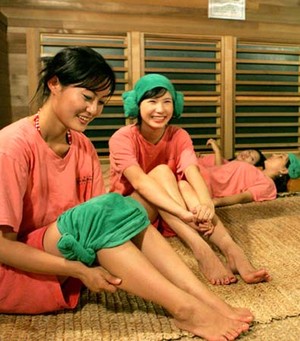
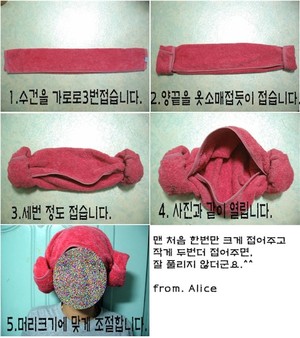
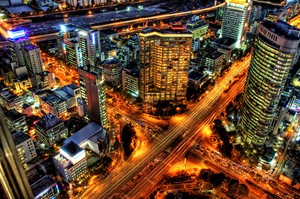
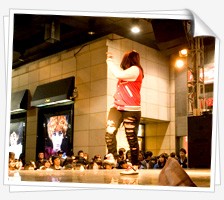
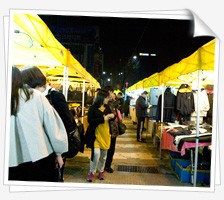
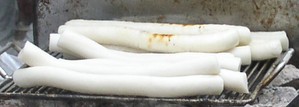
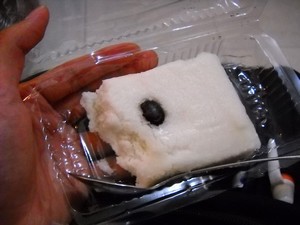
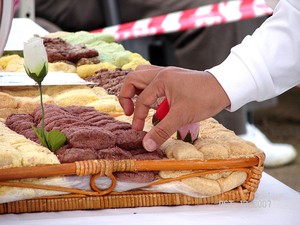
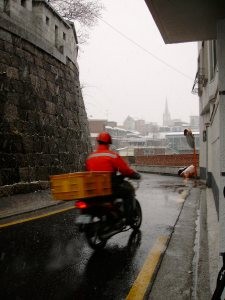
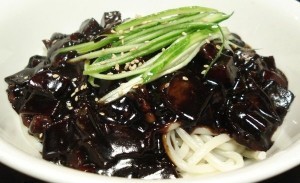 Jjajangmyeon(blackbean noodles) is one of the most popular dishes in South Korea. It consists of wheat noodles served with a black and sweet sauce called chunjang, made from roasted soybean, thickened with cornstarch and sweetened with caramel. The sauce can be prepared in many ways: the vegetarian version is prepared with carrots, cucumber, courgettes, onion and other vegetables while the non-vegetarian version also include pork, beef or seafood like squid and shrimps but not fish. The taste is very rich and the contrast of flavours is enjoyable. The thickness of sauce (due to the starch) are a perfect match for the chewy noodles. Pickled radish and raw onion are the selective side dishes for Jjajangmyeon and are meant to refresh your palate.
Jjajangmyeon(blackbean noodles) is one of the most popular dishes in South Korea. It consists of wheat noodles served with a black and sweet sauce called chunjang, made from roasted soybean, thickened with cornstarch and sweetened with caramel. The sauce can be prepared in many ways: the vegetarian version is prepared with carrots, cucumber, courgettes, onion and other vegetables while the non-vegetarian version also include pork, beef or seafood like squid and shrimps but not fish. The taste is very rich and the contrast of flavours is enjoyable. The thickness of sauce (due to the starch) are a perfect match for the chewy noodles. Pickled radish and raw onion are the selective side dishes for Jjajangmyeon and are meant to refresh your palate.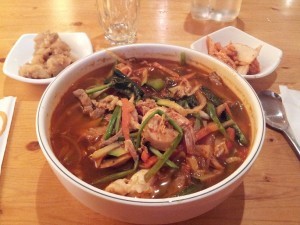
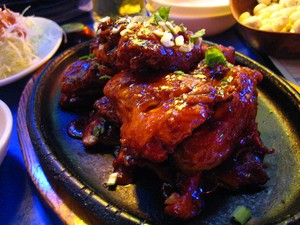 Korean fried chicken or seasoned chicken(yangnyeom chicken) is a fried chicken dish prepared in a Korean style. It is consumed as a meal, fast food at bars, or as an after meal snack in Korea. Korean fried chicken differs from typical American fried chicken by being fried twice. This results in the skin being crunchier and less greasy. Furthermore, Korean-style chicken is not characterized by the crags and crusty nubs associated with American fried chicken as described by Julia Moskin of The New York Times as a "thin, crackly and almost transparent". The chickens are usually seasoned with spices, sugar, and salt, prior to and after being fried. Korean fried chicken restaurants commonly use small or medium sized chicken, in other words, younger chickens resulting in more tender meat. Pickled radishes, beer, and soju are often served with Korean fried chicken.
Korean fried chicken or seasoned chicken(yangnyeom chicken) is a fried chicken dish prepared in a Korean style. It is consumed as a meal, fast food at bars, or as an after meal snack in Korea. Korean fried chicken differs from typical American fried chicken by being fried twice. This results in the skin being crunchier and less greasy. Furthermore, Korean-style chicken is not characterized by the crags and crusty nubs associated with American fried chicken as described by Julia Moskin of The New York Times as a "thin, crackly and almost transparent". The chickens are usually seasoned with spices, sugar, and salt, prior to and after being fried. Korean fried chicken restaurants commonly use small or medium sized chicken, in other words, younger chickens resulting in more tender meat. Pickled radishes, beer, and soju are often served with Korean fried chicken.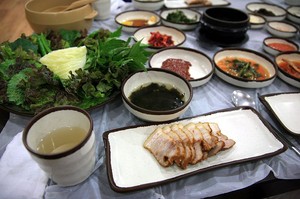 Bossam is a type of ssam in Korean cuisine in which steamed or roasted pork is wrapped in a leaf vegetable such as red lettuce or sesame leaf, often accompanied by condiments known as ssamjang or gochujang. It can even be wrapped in a kimchi leaf. It is usually topped with raw or cooked garlic, onion, freshly made kimchi, saeujeot (pickled fermented shrimp), or other pickles. Bossam is a popular dish in Korea, and can also be served as an anju (side dish consumed while drinking alcoholic beverages). Bossam's origins are closely linked to kimchi. During the gimjang season, when large quantities of kimchi were made, noblemen gifted a pig to the kimchi makers to boost their spirit, as the process required hard work and dedication. The pig was steamed and eaten with freshly made kimchi. Pork meat is boiled in a broth that contains ginger and onions to reduce the smell. Bossam is often eaten with oyster on top of the meat, this variety is called gul bossam. Gul bossam restaurants also provide gamjatang (potato soup), which is traditionally eaten first.
Bossam is a type of ssam in Korean cuisine in which steamed or roasted pork is wrapped in a leaf vegetable such as red lettuce or sesame leaf, often accompanied by condiments known as ssamjang or gochujang. It can even be wrapped in a kimchi leaf. It is usually topped with raw or cooked garlic, onion, freshly made kimchi, saeujeot (pickled fermented shrimp), or other pickles. Bossam is a popular dish in Korea, and can also be served as an anju (side dish consumed while drinking alcoholic beverages). Bossam's origins are closely linked to kimchi. During the gimjang season, when large quantities of kimchi were made, noblemen gifted a pig to the kimchi makers to boost their spirit, as the process required hard work and dedication. The pig was steamed and eaten with freshly made kimchi. Pork meat is boiled in a broth that contains ginger and onions to reduce the smell. Bossam is often eaten with oyster on top of the meat, this variety is called gul bossam. Gul bossam restaurants also provide gamjatang (potato soup), which is traditionally eaten first.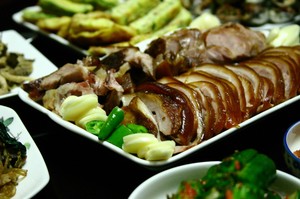 Jokbal is a Korean dish consisting of pigs' feet cooked with soy sauce and spices.[1] It is usually served in dark braising liquid, made from soy, ginger, garlic, rice wine. The hair is removed from pigs' feet and they are thoroughly washed. Leeks, garlic, ginger, cheongju (rice wine) and water are brought to a boil. The pigs' feet are added, brought back to a boil and then simmered until tender. Then additional water, sugar and soy sauce are poured into the pot and the contents are slowly stirred. Once the jokbal is fully cooked, bones are removed, and the meat is cut into thick slices. It is then served with fermented shrimp sauce called saeujeot.As jokbal is usually shared with several other diners, it is usually served in large portions on a platter. Due to its unique greasiness and strong flavor, jokbal is eaten like other Korean grilled meats - wrapped in lettuce with other vegetables by hand before it is eaten. As jokbal is considered an anju, it is often eaten with soju as well as other anjus such as Bindaetteok. Full with gelatins, jokbal is said to be good for skin and preventing wrinkles. The amino acid of methionine in pork is known to detoxicate alcohol, and prevents hangovers. It is also considered good for the detoxication of toxins due to silicosis and heavy metal poisoning.
Jokbal is a Korean dish consisting of pigs' feet cooked with soy sauce and spices.[1] It is usually served in dark braising liquid, made from soy, ginger, garlic, rice wine. The hair is removed from pigs' feet and they are thoroughly washed. Leeks, garlic, ginger, cheongju (rice wine) and water are brought to a boil. The pigs' feet are added, brought back to a boil and then simmered until tender. Then additional water, sugar and soy sauce are poured into the pot and the contents are slowly stirred. Once the jokbal is fully cooked, bones are removed, and the meat is cut into thick slices. It is then served with fermented shrimp sauce called saeujeot.As jokbal is usually shared with several other diners, it is usually served in large portions on a platter. Due to its unique greasiness and strong flavor, jokbal is eaten like other Korean grilled meats - wrapped in lettuce with other vegetables by hand before it is eaten. As jokbal is considered an anju, it is often eaten with soju as well as other anjus such as Bindaetteok. Full with gelatins, jokbal is said to be good for skin and preventing wrinkles. The amino acid of methionine in pork is known to detoxicate alcohol, and prevents hangovers. It is also considered good for the detoxication of toxins due to silicosis and heavy metal poisoning.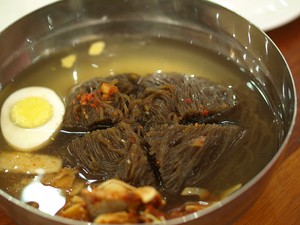 Naengmyeon is a Korean noodle dish of long and thin handmade noodles made from the flour and starch of various ingredients: buckwheat, potatoes, sweet potatoes,naengmyun made with the starch from arrowroot (darker color and chewier than buckwheat noodles), and kudzu. Varieties with ingredients such as seaweed and green tea are available. According to the 19th century documents of Dongguksesigi, it has been made since the Joseon Dynasty. Originally a delicacy in northern Korea, especially in the cities of Pyongyang and Hamhung in North Korea, raengmyeon became widely popular throughout Korea after the Korean War. Naengmyeon is served in a large stainless bowl with a tangy iced broth, julienned cucumbers, slices of Korean pear, and either a boiled egg or slices of cold boiled beef or both. Spicy mustard sauce (or Mustard oil) and vinegar are often added before consumption. Traditionally, the long noodles would be eaten without cutting, as they symbolized longevity of life and good health, but servers at restaurants usually ask if the noodles should be cut prior to eating, and use scissors to cut the noodles.
Naengmyeon is a Korean noodle dish of long and thin handmade noodles made from the flour and starch of various ingredients: buckwheat, potatoes, sweet potatoes,naengmyun made with the starch from arrowroot (darker color and chewier than buckwheat noodles), and kudzu. Varieties with ingredients such as seaweed and green tea are available. According to the 19th century documents of Dongguksesigi, it has been made since the Joseon Dynasty. Originally a delicacy in northern Korea, especially in the cities of Pyongyang and Hamhung in North Korea, raengmyeon became widely popular throughout Korea after the Korean War. Naengmyeon is served in a large stainless bowl with a tangy iced broth, julienned cucumbers, slices of Korean pear, and either a boiled egg or slices of cold boiled beef or both. Spicy mustard sauce (or Mustard oil) and vinegar are often added before consumption. Traditionally, the long noodles would be eaten without cutting, as they symbolized longevity of life and good health, but servers at restaurants usually ask if the noodles should be cut prior to eating, and use scissors to cut the noodles.